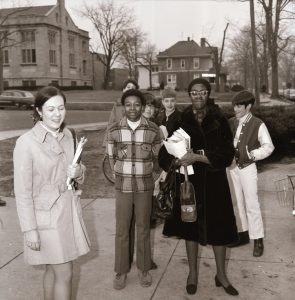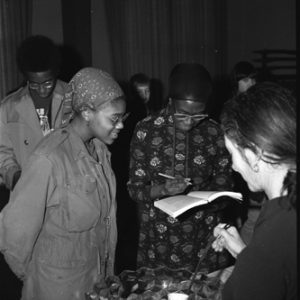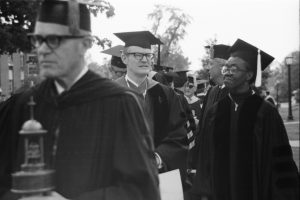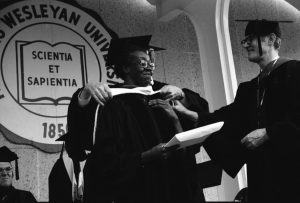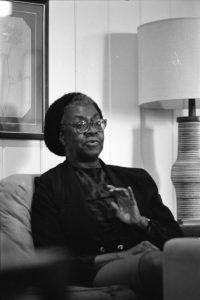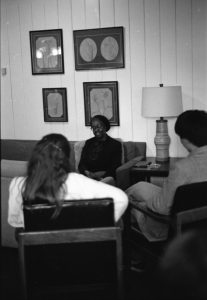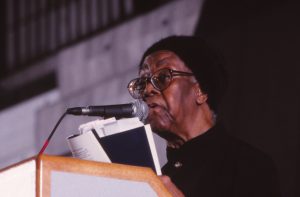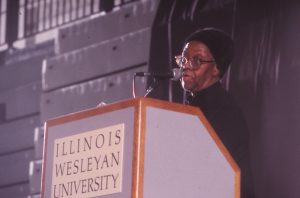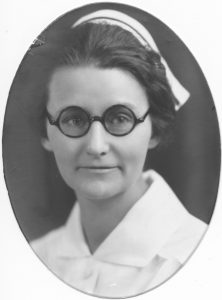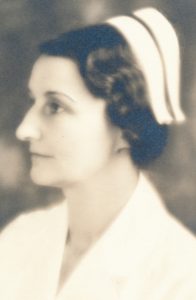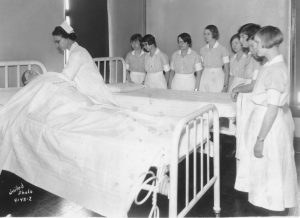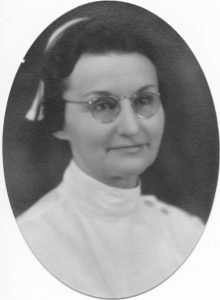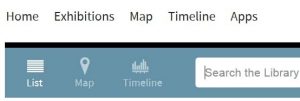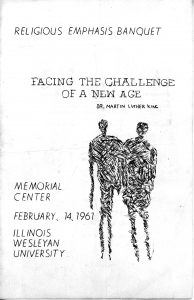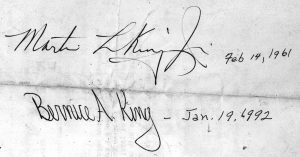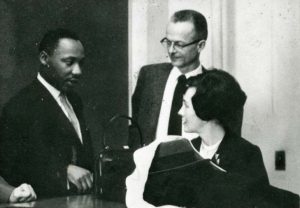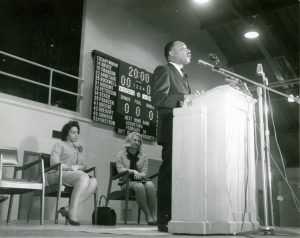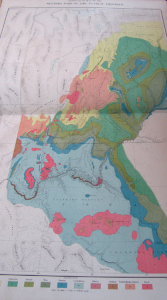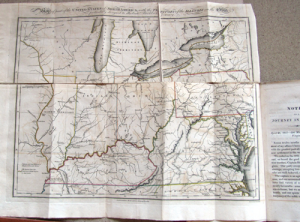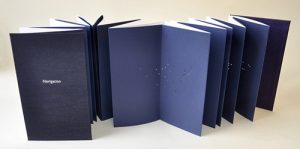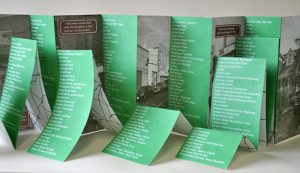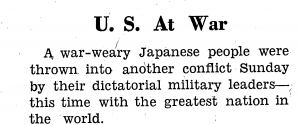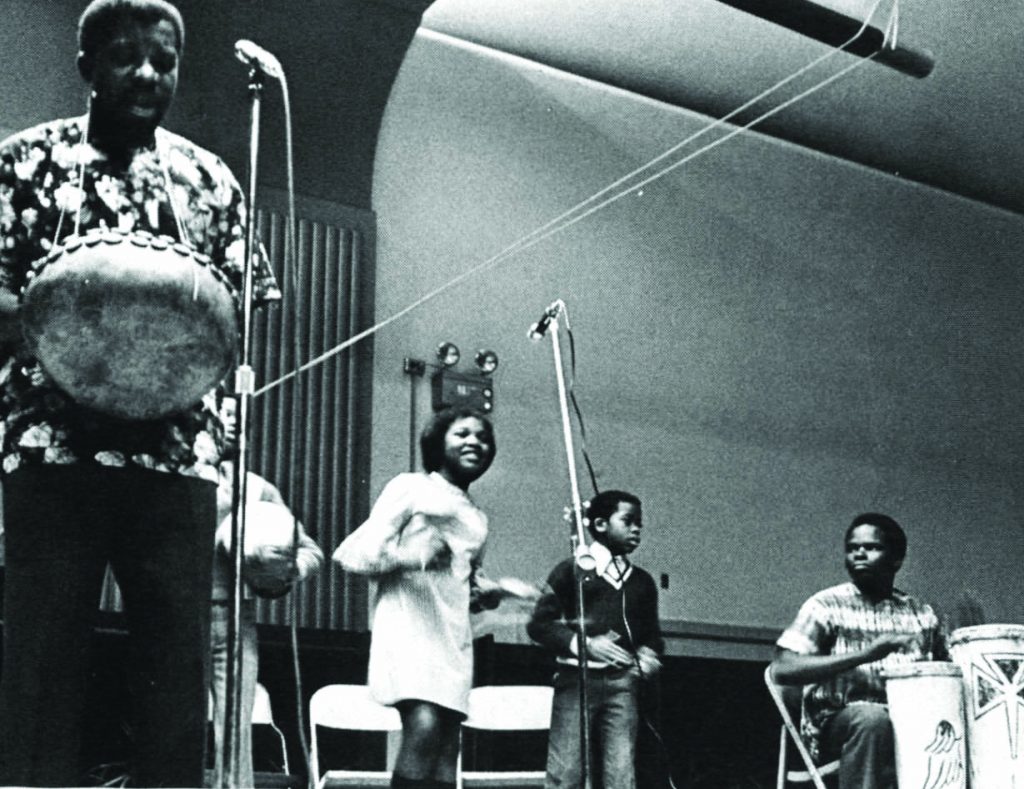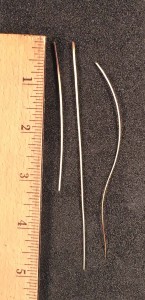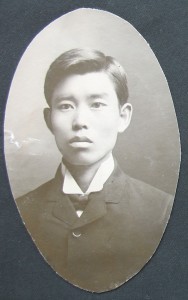In honor of this year being the centennial of Gwendolyn Brooks’s birth, Ross Hettinger from the English Honors Society Sigma Tau Delta contacted the archives about putting together an exhibit based on her connection with our campus. As a result of that request, archives’ staff found news articles and photographs that document her five visits to campus between 1972-1999. Ross created an exhibit that will remain in the library’s entry level rotunda until November 30th. This post provides links to news stories and a selection of photos found in response to this query. All black and white photos were scanned from University’s collection of negatives and the color photos were scanned from slides.
A March 3, 1972 front page Argus story details the plans for the March 9-21, 1972 Fine Arts Festival. The story states that Miss Brooks “will head a list of dignitaries” who would be visiting campus.
The Argus published on the 24th provides a detailed recap of her reading.
The 1972 Wesleyana also contains photos of Brooks and others who shared their talents during the Festival.
The following May The Argus announced that Brooks would be the Commencement speaker for 1973. Only a small photo made it into the IWU Bulletin that summer and fall but details on her remarks are lacking, except for a brief mention in the 1973 Wesleyana.
There was speculation that Brooks would return for her third visit during the Black Fine Arts Festival according to the March 2, 1979 Argus at the invitation of the Delta Sigma Theta Sorority. The March 23, 1979 Argus carried a photo and caption on p. 1 showing that she did.
In 1988 the February 12 Argus stated that the English Department and the Student Senate were sponsoring Brooks’s visit on February 18 at an event to be held at Evelyn Chapel. A follow up article on the 26th described her visit in detail. She titled her presentation “Life, Love, Laughter, Liberty and Laceration.”
Her final visit to campus was as the speaker at IWU’s annual Soul Food Dinner. Her appearance was announced in The Argus on February 2, 1999. A follow up article notes that IWU student Teri Lahmon, Class of 2000, introduced Brooks and read one of her own poems at Brooks’s request.
The Argus also ran an obituary for Brooks on December 8, 2000 which briefly recounts her 1999 visit and mentions that IWU awarded her an honorary Doctor of Humanities degree in 1973.

